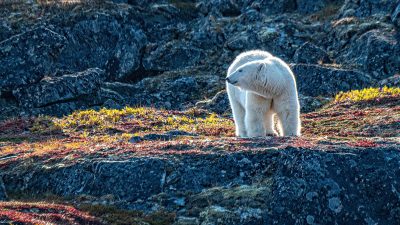Water is essential for human life. Not just water—freshwater. We use it for bathing, for farming, and we need it to survive. But most of the water on Earth is saltwater, found in seas and oceans.
The world's freshwater is found in rivers, lakes, aquifers, and ice. A huge percentage of the world's accessible freshwater is in a single place: Greenland's ice sheet. This gigantic mass of ice forms an area about 2,400 kilometres in length and 1,100 kilometres wide. That makes it about twice the size of the state of Texas.
You may think freshwater is everywhere, but it really isn't. Nearly 97.5% of all water on Earth is undrinkable saltwater. Only 2.5% of all water is drinkable and usable for humans, animals, and plants. Only 1.2% of this is easy to access in rivers and lakes.
Thirty per cent of our freshwater is found in the ground in a select few places on Earth, and then nearly 70% of the Earth's freshwater is stored in ice. That includes ice sheets, ice caps, ice fields—you get the idea. The Greenland ice sheet holds a whopping 10% of this water. That's a tremendous resource! But climate change threatens to shrink this vital reservoir.
It's no secret the Earth is heating up, and the Arctic is experiencing the worst of it. Since the 1870s, summer temperatures in Greenland have increased by about 1.2 degrees Celsius. That's enough to take a huge toll on the ice sheet. Studies show the melting rate of the ice has doubled since the start of the twentieth century.
Recently, the ice sheet has been losing an average of 270,000,000,000 tons of ice every year as the Arctic warms. And without extremely frigid and snowy winters, the ice sheet doesn't regain enough snow annually to make up for the loss.
The ice sheet is currently going through a negative feedback cycle, based on something called the albedo effect. Albedo is the measure of the Earth's reflectiveness. As the ice melts, pools of water form, along with pockets of darker interior ice. These absorb sunlight more readily than the reflective surfaces of white ice and snow.
More absorption means more warming, more melting, and, therefore, more dark areas—creating a vicious circle that can't be stopped. As the ice sheet melts, its freshwater runoff trickles into the sea, mingling with saltwater. From that point on, it is no longer freshwater and no longer drinkable.
People in Greenland use the ice sheet as their freshwater supply. But the melting of the ice sheet is a global, as well as a local, problem. If all of Greenland's ice sheet would melt, the world would be in serious trouble.
Scientists predict sea levels would rise six to seven metres. A sea level this high would be catastrophic. Low-lying islands would be completely underwater. Coastal cities like New Orleans would need to be abandoned due to flooding.
Storm surges have already shown the impact that greater volumes of seawater can have in extreme weather conditions. But losing volume from Greenland's ice sheet is about a lot more than sea level rise.
The ice sheet helps cool the planet itself by reflecting sunlight and cooling air and water currents that affect the temperature of the oceans. Perhaps most importantly, Greenland's ice sheets holds drinking water for an increasingly thirsty world.














